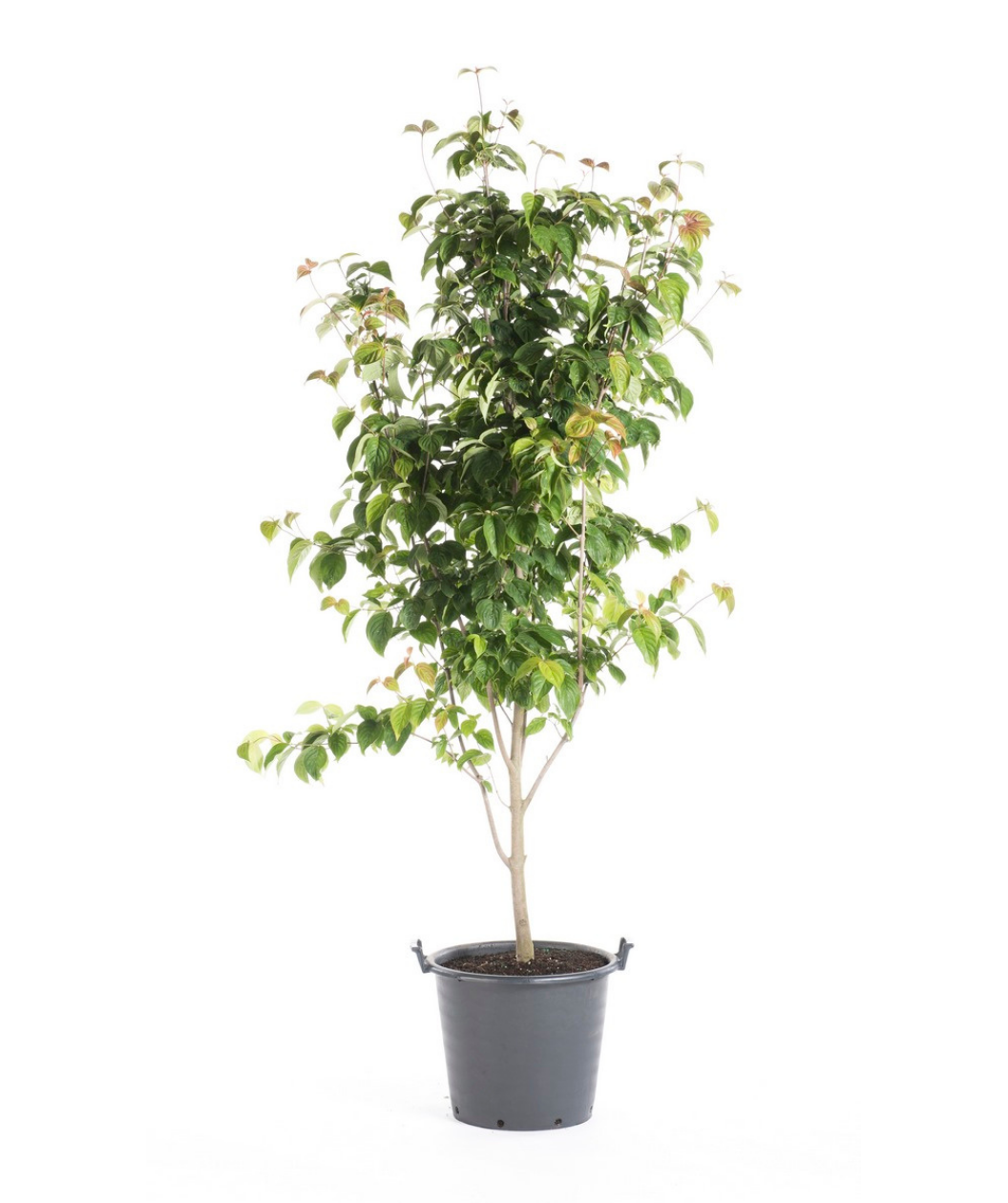



A DYNAMIC ORNAMENTAL DOGWOOD TREE WITH YEAR-ROUND BEAUTY
- White blossoms smother branches in late spring
- Unique red fruits in late summer
- Vibrant fall foliage in orange, yellow, and purple
- Perfect for entertaining near your porch or patio
- A conversation starter in any season
Growth Facts
- Hardiness Zone: 6-9
- Mature Height: 20' tall
- Mature Width: 20' wide
- Exposure: Full Sun/Part Shade
- Spacing: 15-20' apart
A DYNAMIC ORNAMENTAL DOGWOOD TREE WITH YEAR-ROUND BEAUTY
- White blossoms smother branches in late spring
- Unique red fruits in late summer
- Vibrant fall foliage in orange, yellow, and purple
- Perfect for entertaining near your porch or patio
- A conversation starter in any season
Growth Facts
- Hardiness Zone: 6-9
- Mature Height: 20' tall
- Mature Width: 20' wide
- Exposure: Full Sun/Part Shade
- Spacing: 15-20' apart
Why plant Hyperion® Rutgers Dogwood?
The Hyperion® Hybrid Dogwood is a dynamic new ornamental tree that will delight you with a year-long procession of colorful flowers, fruit, and foliage. In late spring, the white blossoms will smother the branches in a floral avalanche. In late summer, the funny nubbly red fruits will steal the show. And when the days turn crisp and cool, this dazzling tree will grace your garden with orange, yellow, and purple fall foliage. Plant Hyperion® Dogwood near your porch, patio, or wherever you entertain, and it will be a topic of conversation at your next get-together, no matter what time of year!
Hyperion® arose from the legendary Dr. Elwin Orton’s Dogwood breeding program at Rutgers University. After a devastating Dogwood anthracnose disease began attacking Flowering Dogwoods in the 1970s and ’80s, Dr. Orton had the brilliant idea to cross our native tree with Asian Dogwoods. Bred in 1989, the recently released Hyperion® is composed of three-quarters Japanese Kousa Dogwood and one-quarter American Flowering Dogwood. It has the same great resistance to anthracnose of the Kousas, and it’s also very resistant to powdery mildew. This fast-growing tree is the most vigorous of the Rutgers hybrids, too.
How to use Hyperion® Rutgers Dogwood in the landscape?
Of the Kousa-Flowering Dogwood crosses released by the Rutgers program so far, none have a consistent display of showy fruit… except for Hyperion®. Hyperion’s red, cherry-sized fruits will get some quizzical looks from your guests! They’re globe-shaped like Kousa fruits but covered with bumps (the fruits, not your guests). The Kousa blood in this tree also means that in time, you’ll get to see that wonderful exfoliating patchwork bark that Kousas are famous for.
Planting Zones
Hardiness Zone: 6-9
How To Plant Hyperion® Rutgers Dogwood
Like most Dogwoods, this tree will flower and fruit most heavily in full sun, but light shade is acceptable, too. This tree won’t take up much of your valuable time for maintenance. Diseases are of little concern, and pruning will be minimal.
How To Water
Hyperion® has proven itself to be surprisingly drought-hardy, although like nearly all trees for your yard, it does appreciate regular irrigation, especially during that critical establishment period. A layer of mulch and the Bower & Branch™ Water Element will keep your tree’s roots cool and moist.
How To Fertilize
Incorporate Elements Starter Plant food granular form into the soil when planting. If planting in spring or summer, start fertilizing late fall using Elements Starter Plant food granular form on an annual basis each late fall. Continue this for the first three years to get your plant well established.
How To Prune
As your tree grows, you’ll probably want to remove the lowermost branches to show off that amazing jigsaw-puzzle bark! Pruning is best done shortly after the flowers are spent.




